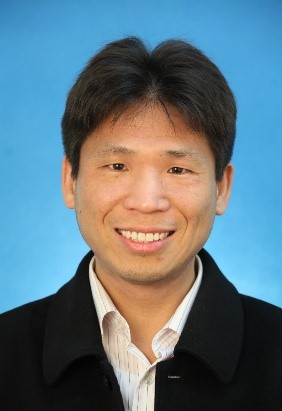 | Yu Yuguo Professor and Doctoral Supervisor Professor , Research Institute of Intelligent Complex Systems, Fudan University Director, Academic Affairs, Research Institute of Intelligent Complex Systems, Fudan University (since 2020) Professor, school of Life Sciences, Fudan University (2012-2020) Professor, State Key Laboratory of Medical Neurobiology and MOE Frontiers Center for Brain Science, Fudan University (since 2013) Appointed Professor, Shanghai's 'Eastern Scholar' program (2013) and its follow-up plan (2017) |
Biography
Ph.D. in Physics from Nanjing University, Postdoctoral Fellow in Computational Neuroscience at Carnegie Mellon University. Former Research Scientist at Yale University. Recipient of the Shanghai Eastern Scholar Award (2013) and its Tracking Program Award (2017), 2021 Shanghai Outstanding Academic Leader Award (2021). Member of the Chinese Society for Computational Neuroscience, the Committee on Brain-Machine Fusion and Biomimetic Intelligence, the Committee on Biomedical Engineering and Biological cybernetics, etc. Associate Editor of journals such as IEEE Transactions on Cognitive and Developmental Systems, Mathematics, Frontiers in Computational Neuroscience, and Cognitive Neurodynamics. Principal investigator of major projects funded by the China Ministry of Science and Technology and more than 10 projects funded by the National Natural Science Foundation of China. Author of over 70 SCI papers published in Nature, PNAS, Neuron, Physical Review Letters, Journal of Neuroscience, PLoS Computational Biology, etc. Research interests: Brain-inspired theories of intelligent complex systems and neural computing mechanisms, Energy efficient neural coding principles.
Research Interests
Yu Yuguo focuses on Brain-inspired Intelligence and Computational Neuroscience, including the following sub-fields:
Brain-inspired Intelligence and Computational Neuroscience
Neural Computation Model
Neural Coding Theory
Network Topology Analysis
Sensory Fusion Mechanism
-Brain Connectome Atlas
Self-organizing Learning Algorithm
Multi-sensory Fusion Model
Low-power Mechanism of the Human Brain
Representative Publications
Huang M and *Yu Y, (2023), Wiring Cost Minimization: A Dominant Factor in the Evolution of Brain Networks across Five Species, 2023 CogSci (CCF-B), Vol. 45, No. 45,1393-1399.
#Zheng R, #Li J, *Wang Y, Luo T and *Yu Y, (2023), ScatterFormer: Locally-Invariant Scattering Transformer for Patient-Independent Multispectral Detection of Epileptiform Discharges, (AAAI Oral, CCF-A).
*Yu Y, Herman P, Rothman DL, Agarwal D, & *Hyder F. (2023), A 3D atlas of functional human brain energetic connectome based on neuropil distribution, Cerebral Cortex, 33(7):3996-4012.
Zhang J, Gu Y, *Chen A and *Yu Y, (2022) Unveiling dynamical systems strategies for multisensory processing: from neuronal fixed-criterion integration to population Bayesian inference, Research, 2022,1-12.
Zhou Y and *Yu Y, (2021)
Human Visual Search Follows Suboptimal Bayesian Strategy Revealed by a Spatiotemporal Computational Model and Experiment. Communications Biology, 4,34.
Wang X, Liu H, Morstein J, Novak AJE, Trauner DH, *Xiong Q, *Yu Y, and *Ge S, (2020)
Metabolic tuning of inhibition regulates hippocampal neurogenesis in the adult brain,
Proc Natl Acad Sci (PNAS), 117(41):25818-25829.
Fu X and *Yu Y. (2019)
Reliable and efficient processing of sensory information at body temperature by rodent cortical neurons.
Nonlinear Dynamics, 98(1):215-31.
Du MM, *Yu Y and *Wu Y, (2018)
Astrocytic Kir4.1 channels and gap junctions account for spontaneous epileptic seizure,
PLoS Comp. Biol. 14(3): e1005877
*Yu Y, Herman P, Rothman DL, Agarwal D and Hyder F, (2018)
Evaluating the gray and white matter energy budgets of human brain function,
Journal of Cerebral Blood Flow & Metabolism, 38(8):1339-1353.
Pan XL. et al, ... *Yu Y and *Zhong CJ. (*Co-PI) (2016)
Measurement of Blood Thiamine Metabolites for Alzheimer’s disease Diagnosis,
EBioMedicine, 26(3):155-162.
*Yu Y, Migliore M, Hines ML, and Shepherd GM (2014)
Sparse coding and lateral inhibition arising from balanced and unbalanced dendrodendritic excitation and inhibition,
Journal of Neuroscience 34: 13701-13713.
*Yu Y, McTavish TS, Valenti C, Hines ML, Shepherd GM and Migliore M. (2013)
Sparse distributed representation of odors in a large-scale olfactory bulb circuit.
PLoS Comp. Biol., 2013 9(3): e1003014.
Yu Y, Hill A. and McCormick DA. (2012)
Warm body temperature facilitates energy efficient cortical action potentials.
PLoS Comp. Biol., 8(4) e1002456.
Yu Y, Maureira C and McCormick DA (2010)
P/Q and N channels control baseline and spike-triggered calcium levels in neocortical axons and synaptic boutons,
Journal of Neuroscience, 30: 118580-11869
Haider B, Krause MR, Duque A, Yu Y, Touryan J, Mazer JA, McCormick DA (2010)
Synaptic and network mechanisms of sparse and reliable visual cortical activity during non-classical receptive field stimulation.
Neuron, 65: 107-121
Yu Y, Shu Y, Duque A, Haider B and McCormick DA (2008)
Cortical Action Potential Back-propagation Explains Spike Threshold Variability and Rapid-Onset Kinetics.
Journal of Neuroscience, 28: 7260-7272. PMCID: 2664555
McCormick DA, Shu Y and Yu Y (2007)
Hodgkin and Huxley model—still standing?
Nature. 445: E1-E2.
Shu Y, Yu Y, Yang J and McCormick DA (2007)
Selective control of cortical axonal action potentials by a slowly inactivating K+ current.
Proc Natl Acad Sci USA (PNAS) 27: 11453-11458.
Shu Y, Hasenstaub A, Duque A, Yu Y and McCormick DA (2006)
Modulation of intracortical synaptic potentials by presynaptic somatic membrane potential.
Nature 441(7094):761-5.
*Yu Y, Richard RD and Lee TS (2005)
Preference of sensory neural coding for 1/f signals.
Phys Rev Lett, 94, 1081031-4











